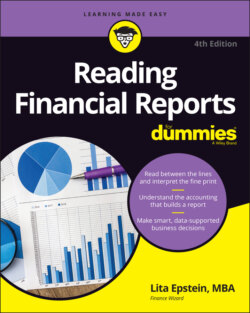Читать книгу Reading Financial Reports For Dummies - Lita Epstein - Страница 87
Equity accounts
ОглавлениеEquity accounts reflect the portion of the assets that isn't subject to liabilities and is therefore owned by a company's shareholders. If the company isn't incorporated, the ownership of the partners or sole proprietors is represented in this part of the balance sheet in an account called Owner's equity or Shareholders’ equity. The following is a list of the most common equity accounts:
Common stock: This account reflects the value of the outstanding shares of common stock. Each share of common stock represents a portion of ownership, and this portion is calculated by multiplying the number of outstanding shares by the value of each share. Even companies that haven't sold stock in the public marketplace, but have incorporated, list shareholders on the incorporation documents and list the value of their shares on the balance sheet. Each common stock shareholder has a vote in the company's operations.
Preferred stock: This account reflects the value of outstanding shares of preferred stock, which falls somewhere between bonds and shares of stock. Although a company has no obligation to repay the preferred shareholders for their investment, it does promise these shareholders dividends. If the company can't pay the dividends for some reason, they're accrued for payment in later years. Any unpaid preferred stock dividends must be paid before a company pays dividends to common stock shareholders. Preferred shareholders don't vote in the firm's operations. If the business is liquidated, preferred shareholders receive their share of the assets before common shareholders.
Retained earnings: This account tracks the profits or losses for a company each year. These numbers reflect earnings retained instead of being paid out as dividends to shareholders. They show a company's long-term success or failure.
